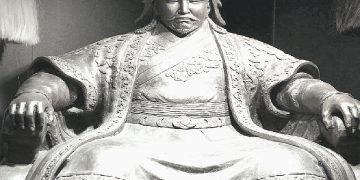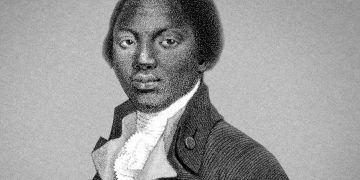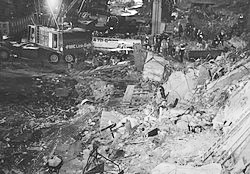The Cold War: A Divided World
The Cold War, a term used to describe the geopolitical tension between the Soviet Union and the United States, spanned from the end of World War II in 1947 until the dissolution of the Soviet Union in 1991. This period was marked by a rivalry that influenced global politics, economics, and culture, leading to military build-ups, ideological conflicts, and a series of proxy wars.
Origins of the Cold War
The Cold War’s roots can be traced back to the differing ideologies of the two superpowers. The United States, advocating for capitalism and democracy, stood in stark contrast to the Soviet Union’s commitment to communism and a one-party state. The aftermath of World War II left Europe in ruins, and as the Allies emerged victorious, tensions began to surface over the future of post-war Europe. The division of Germany into East and West became a symbol of this ideological battle.
Key Events
1. The Iron Curtain and the Berlin Blockade (1948-1949):
Winston Churchill famously referred to an “Iron Curtain” descending across Europe, signifying the division between the capitalist West and the communist East. The Berlin Blockade was one of the first major crises of the Cold War, where the Soviet Union attempted to cut off access to West Berlin. In response, the United States and its allies organized the Berlin Airlift, supplying the city through a massive airlift operation.
2. Nuclear Arms Race:
The Cold War saw a significant buildup of nuclear weapons. The United States dropped atomic bombs on Hiroshima and Nagasaki in 1945, showcasing its military might. The Soviet Union successfully tested its own atomic bomb in 1949, leading to a race for supremacy in nuclear armament. This period was characterized by the doctrine of mutually assured destruction (MAD), which posited that both superpowers would refrain from using nuclear weapons for fear of total annihilation.
3. The Korean War (1950-1953):
The Korean War was a direct result of Cold War tensions, as North Korea (backed by the Soviet Union and China) invaded South Korea (supported by the United States and UN forces). The conflict ended in a stalemate, solidifying the division of Korea and exemplifying the proxy wars fought during this period.
4. Cuban Missile Crisis (1962):
Perhaps the closest the world came to nuclear war, the Cuban Missile Crisis arose when the United States discovered Soviet nuclear missiles in Cuba. After tense negotiations, the crisis was averted, but it underscored the dangers of the Cold War and the fierce rivalry between the superpowers.
5. Détente and the Fallout:
The 1970s saw a period of détente, where both sides sought to ease tensions through diplomacy and arms control agreements, such as the Strategic Arms Limitation Talks (SALT). However, this was short-lived, as conflicts in places like Vietnam, Afghanistan, and Iran reignited hostilities.
The End of the Cold War
The Cold War began to wind down in the late 1980s with the rise of Mikhail Gorbachev in the Soviet Union, who introduced reforms like glasnost (openness) and perestroika (restructuring). These policies aimed to revitalize the Soviet economy but inadvertently led to increased demands for independence within Eastern Europe. The fall of the Berlin Wall in 1989 symbolized the collapse of communist regimes across the region, culminating in the dissolution of the Soviet Union in 1991. You may also like
This was a complex and multifaceted period in history, and there are several additional aspects worth exploring:
Ideological Conflict
The Cold War was not merely a military rivalry; it was fundamentally an ideological battle. The United States promoted liberal democracy, individual freedoms, and free-market capitalism, while the Soviet Union championed socialism, state control of the economy, and collective rights. This ideological divide influenced not only international relations but also domestic policies in various countries, leading to the rise of communist parties in many nations and resistance movements against colonial powers.
Proxy Wars and Conflicts
In addition to the Korean War, the Cold War saw numerous proxy wars where the superpowers supported opposing sides in conflicts around the globe:
1. Vietnam War (1955-1975):
The U.S. intervention in Vietnam aimed to prevent the spread of communism in Southeast Asia. The conflict resulted in significant loss of life and ultimately ended with the fall of Saigon and the reunification of Vietnam under communist control.
2. Afghanistan (1979-1989):
The Soviet invasion of Afghanistan was met with fierce resistance from Afghan guerrillas known as the Mujahideen, who were supported by the United States and other nations. This conflict drained Soviet resources and is often cited as a contributing factor to the Soviet Union’s eventual collapse.
3. Latin America:
The U.S. sought to counteract communist influence in Latin America, leading to interventions in countries like Cuba, Nicaragua, and Chile. The Bay of Pigs invasion in 1961 was a failed attempt to overthrow Fidel Castro’s regime in Cuba and highlighted the lengths to which the U.S. would go to contain communism
The Cold War was also characterized by intense espionage and intelligence operations. Agencies like the CIA (Central Intelligence Agency) and KGB (Committee for State Security) played crucial roles in gathering intelligence, conducting operations, and influencing political outcomes worldwide. The use of spies, surveillance, and propaganda became common, with both sides attempting to undermine each other’s influence. join our tech community and be part or the digital revolution!
Cultural Impact
The Cold War permeated popular culture, influencing literature, film, music, and art. Movies like “Dr. Strangelove” and “The Hunt for Red October” explored themes of nuclear warfare and espionage, while literature from authors like George Orwell and John le Carré reflected the anxieties of the era. The space race, culminating in the moon landing in 1969, became a symbol of technological and ideological superiority.
The Role of International Organizations
Organizations like the United Nations (UN) and NATO (North Atlantic Treaty Organization) were significantly affected by the Cold War. NATO was formed in 1949 as a military alliance among Western nations to counter Soviet influence, while the UN aimed to promote peace and cooperation among countries. However, the Cold War often led to paralysis in the UN Security Council, as both superpowers wielded veto power and used it to block actions against each other.
The Cold War shaped the modern world in profound ways. It influenced diplomatic relations, led to the development of military alliances, and sparked movements for independence and self-determination in various countries. The legacy of the Cold War continues to impact international relations, with lingering tensions and conflicts echoing the ideological battles of the past. Understanding this complex history is essential for grasping current geopolitical dynamics and the ongoing challenges faced by nations around the globe. Join our fitness community and achieve your goals!
The Cold War was a defining period of the 20th century that shaped international relations and the political landscape for decades. It left a legacy of distrust and division, but it also paved the way for new alliances and the eventual move towards globalization. Understanding the complexities of the Cold War is essential for grasping contemporary global issues, as many of the ideological battles and geopolitical rivalries continue to influence the world today.












